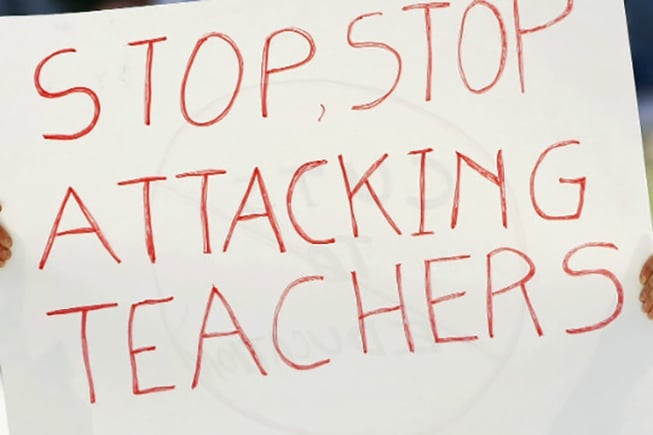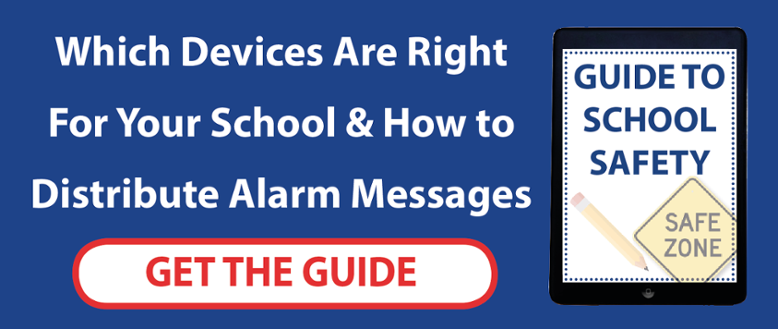
At the beginning of 2016, the BBC published an article investigating violence inside British schools, and came up with some shocking stats. In fact, 9 out of 10 staff have to deal with challenging behaviour, such as swearing or shouting. 4 out of 10 have experienced violence from pupils in 2015; out of those, 77% said they had been pushed, and around half were kicked or had an object thrown at them.
This is not only a massive threat for the safety of schools and teachers, but it's also an economical threat for councils. In fact, according to the Sunday Express, compensation payments to teachers doubled in the past year to more than £600,000.
Is the school classroom a dangerous place for teachers?
A study by the Guardian found that the number of exclusions for violence against teachers has been rising by around 6% per year. This violence comes not only from pupils but also from their parents.
The recent trial following the death (in 2014) of Ann Maguire, a Spanish teacher attacked by student Will Cornick with a knife in the classroom demonstrates that very sadly this violence can be fatal. Even one teacher attacked by students is one too many. But when the statistics are so extreme, demonstrating that violence in the classroom is part of everyday life for several education professionals, something needs to be done.
Other notable examples include a teacher in Nottingham who was paid £60,000 for the injuries suffered, or a teacher in Hillingdon who got hit by a ball of clay thrown by a student with learning difficulties. And the episodes don't end here, unfortunately
Moreover, worrying figures reveal record number of kids are taking knives to school.
Is attacking a teacher a crime?
If the police are called by a school, the officers will decide which is the most appropriate offence to charge an attacker with. The legislation that the police will deploy in each instance derives from the Offences Against the Person Act 1861. Touching or manipulating anyone's body physically without their consent is legally known as battery, and causing them physical harm of any kind can carry penalties for assault. Common assault (where no injury is involved, or the injuries involved are not serious), Actual Bodily Harm (which involves injuries that are more severe) and Grievous Bodily Harm (which is even more severe) are subject to varying penalties. These include fines, prison sentences and time in young offenders; institutions if the person charged is under 18 years of age.
Schools can also impose their own discretionary penalties on students, including detention, extra classes and (in more severe cases) exclusion. Though they are more rare in the classroom there are three other forms of physical harm that it is important to take measures to avoid in schools: attempted murder, murder and manslaughter. Murder is associated with the most severe sentences of all. The 16 year old student who murdered Ann Maguire, whose case was mentioned above, was sentenced to a minimum of 20 years in prison.
The need for timely help
Though surrounded by students in the classroom, a teacher who is in the room without any other teachers or support staff around them is technically a lone worker. If they are attacked by a student, they need a strategy to prevent the violence from escalating - as it did in the case of the violent classroom situation described above. Though eventually, the teacher manages to get the situation under control, it is clearly difficult for him to do this all by himself, when surrounded by panicking children, some of whom have the effect of encouraging the attacker. It is only with the help of his students that this teacher can bring the situation back under control. This is not an ideal situation: teachers should not have to rely on other students to protect them from student violence. Other teachers, such as Ann Maguire, are not so lucky.
Though the use of glass walls in classrooms has gone some way to make it easier for managers to monitor classroom situations, more needs to be done. A more comprehensive system needs to be put in place to ensure that teachers can instantly get the help that they need from other trained professionals as soon as a classroom situation appears to be turning violent, or as soon as a student poses a threat of attack.
Cloud based monitoring and alerting a comprehensive and effective solution
Implementing a solution whereby teachers can instantly alert their colleagues when they are in need of help, is a highly effective way of increasing safety in schools. Such systems are already in place for lone workers in other professions (for instance construction workers or lone salespeople).
There are two key ways in which a cloud based monitoring solution can work to limit episodes of school violence. Firstly, they can act as alert systems. As mentioned above, a teacher can use the system to call for help whenever necessary. Secondly, they can record the incident: if a teacher is verbally abused by a parent or student they can make a live audio recording, which can be invaluable when assessing the incident at a later date and taking the necessary course of action. Finally, these systems can be used to record incidents automatically, creating an accurate log and audit trial, which is not only beneficial if an incident is investigated by the HSE but also for continual improvement purposes.





